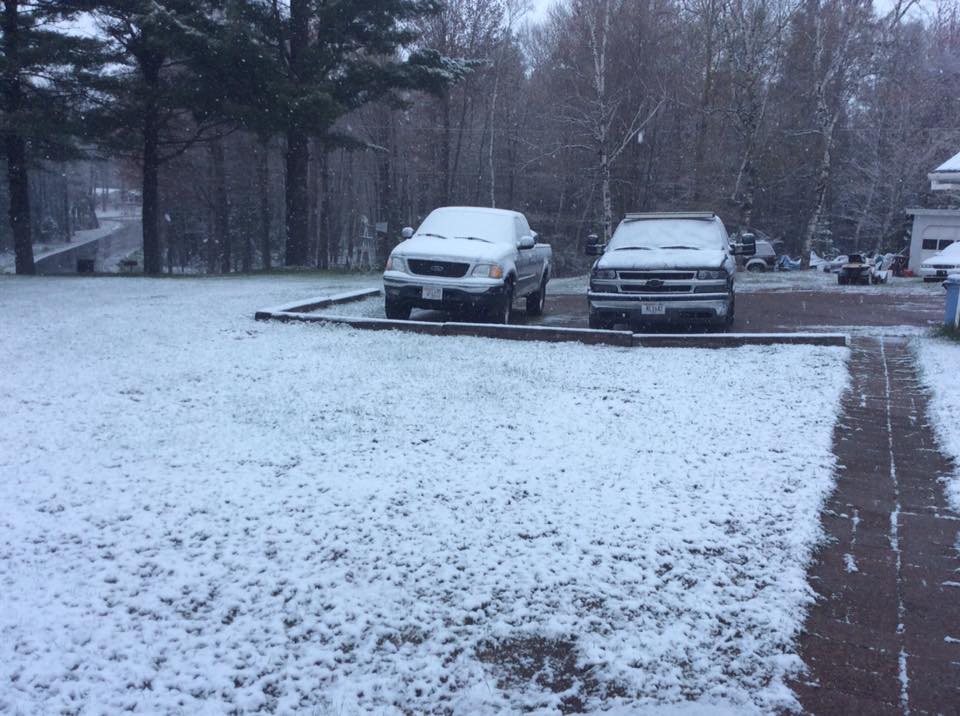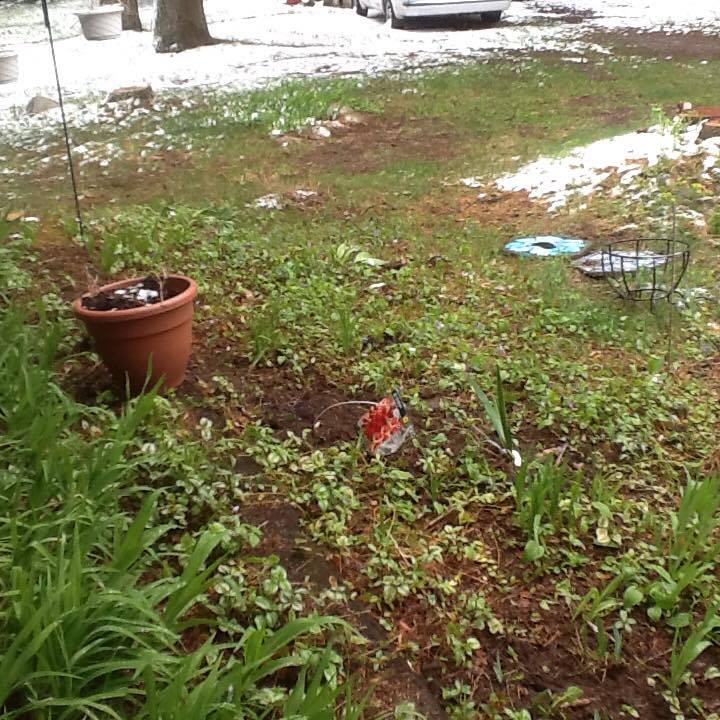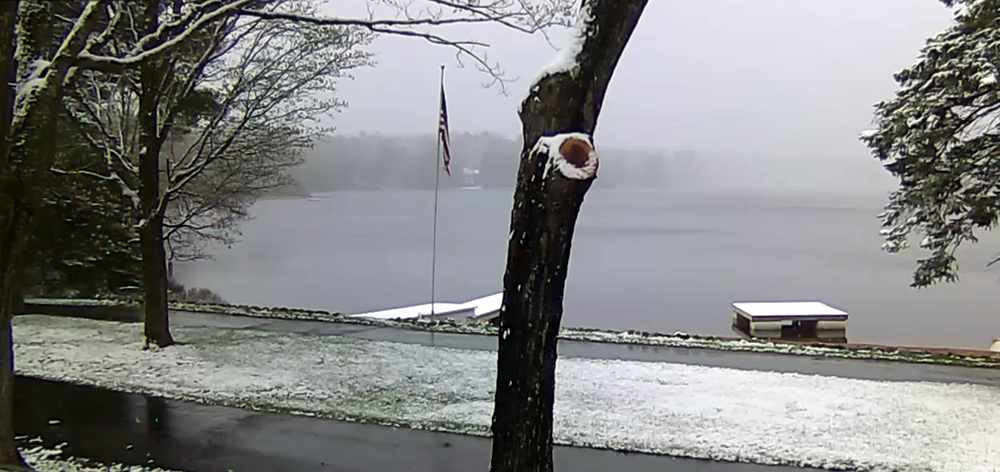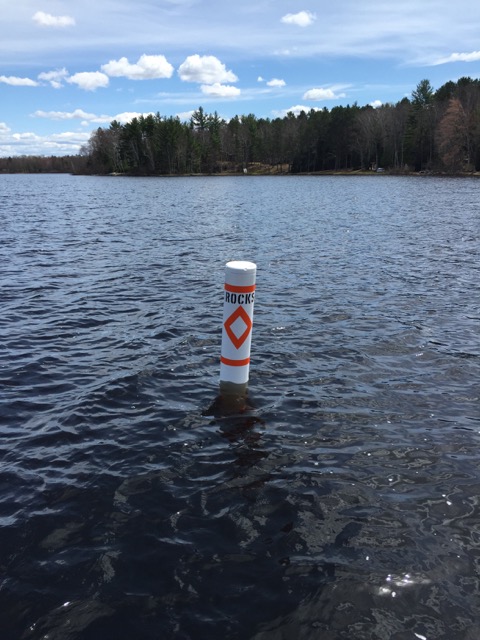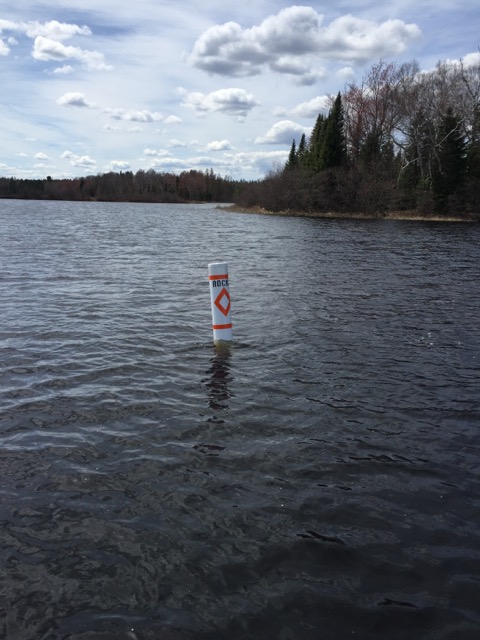Hello Friends!
One week ago today, Jeff Roth and his assistant (also a retired DNR Fisheries Biologist) conducted the first phase of their project. This phase focused on shocking, sizing, and health assessment of multiple species along the entire perimeter of our lake. Todd Emro joined Roxanne and I on a crystal clear glorious evening with the moon glowing so brightly that we almost needed no lights to observe the action. It truly was one of those special evenings that started out moderately warm, with no bugs, no wind, a sunset that made the sky glow orange and then blue-pink, and a complete silence that was only broken by the haunting calls of our loons and responses from neighboring lakes. Only those who own property on Martha Lake can appreciate and take solace in this awesome beauty of life in the Northwoods.
Since I am not familiar with Fisheries Biologists and how they do their work, I asked a lot of questions and if you don’t mind, I’ll share what I learned with you. First of all, Jeff and his partner arrived around 8PM to get to know us and explain what they were going to do. He said that fish shocking is both an art and science, in that you need to know where to shock, what settings of electricity to use, and follow a careful scientific protocol that you can use to statistically analyze your samples. Jeff said that in lakes, shocking is preferred at night as the fish come in to shore to feed, there is usually less activity on the lake, and in the shallow water, the fish are easier to see and net with the bright spotlights on the bow of their boat. I also learned that the electrical current does not go all the way from the electrode to the bottom of the lake. Rather, the effective range of the current is between 5 - 6 feet deep. He also said that AC current must be used in lakes but that DC current is preferred in streams. Apparently, DC current can be used to lure fish out of holes in streams that otherwise would be missed.
Here is a picture of their boat completely rigged up and electrodes (3 per boom):

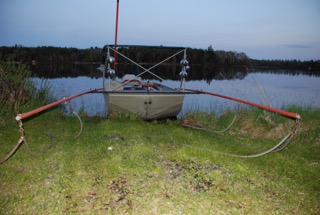
Here is a picture of their boat in the water minutes away from starting (sorry for the blurred photo but we couldn’t hold the boats still enough!):
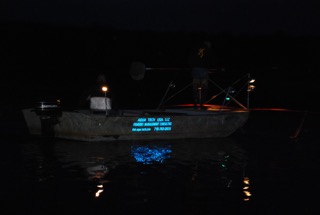

Their journey took them around the entire perimeter of our lake in a clockwise direction starting off of our northern point and ending along the south shore of loon island. For safety, we were instructed to stay about 50 yards away at all times until they turned their motors off. It was interesting to watch the long pauses of no action followed by a few occurrences of frenzied netting. We also got to see a few occurrences of apparent explosions in the water. We later learned that the really big muskies can sense the electrical current a fraction of a second before the rest of the fish and respond by a vigorous attempt to get the heck out of the way as fast as possible. No netting of big musky’s occurred because they didn’t want to harm them by trying to net them and because the big musky’s got away before they were able to be stunned.
Jeff said that the current used was a small as possible to only stun the fish for about 30 seconds. Jeff was the driver of the boat and adjusted current as needed. His assistant stood on the brightly lighted platform and had about 270 degree visibility to net the fish rapidly. Once the fish were netted they were put in a large tank in the center of the boat and kept until they could be studied. No fish were lost or harmed as a result of the stunning process. When the tank got sufficiently full, the would pull up in the sand, shut down their motors and begin their assessment and recording. This occurred twice during the course of the evening and we were then allowed to pull up next to them and observe their study. Jeff net a fish from the tank, determine it’s species, measure it’s size, assess its health, and determine its spawning status while his assistant feverishly recorded the data. Then we were allowed to take pictures before the fish was returned to the lake. All fish were very active and were anxious to get back into the lake! We took several pictures but here are the highlights:




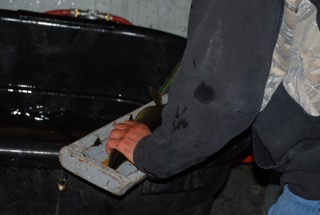
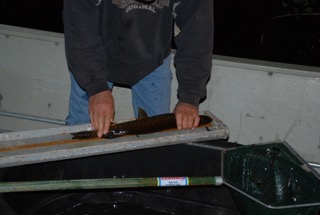
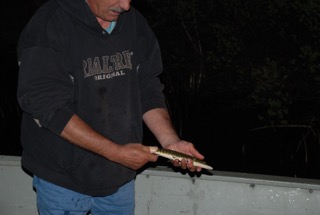
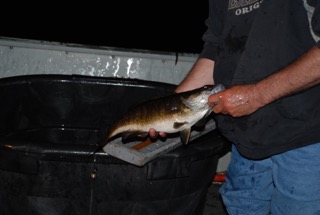
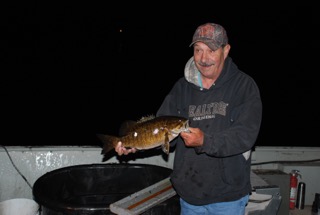
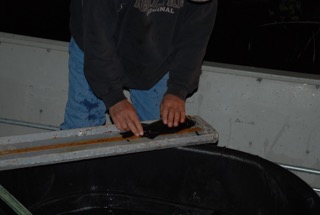
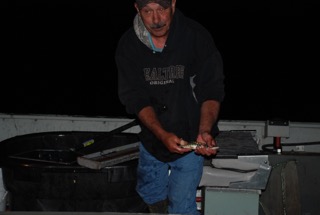
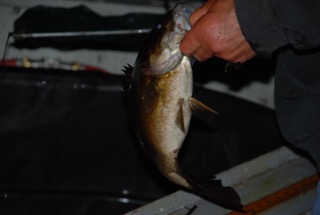
Their work concluded before midnight and when prompted for their observations, they were like physicians, hesitant to make a diagnosis until they performed more tests and could study the data in more detail. This shocking project focused exclusively on game fish. They will return for several netting projects in June to study both pan fish and game fish.
Todd Emro made several excellent observation that he wanted to share with you:
- Jeff and his team are data driven professionals and cautious to prematurely draw conclusions or make recommendations until the analysis is complete.
- First phase was electroshocking of the entire shoreline in very shallow water from approximately 9:00pm to 11:00pm
- Not all fish observed were captured and recorded
- Second phase will be four overnight nettings in four locations around the lake, to occur second week in June
- Depending on the results of the first two surveys, another electroshocking may occur in the fall
- Overall quantity of fish found was lower than expected
- Some natural reproduction of walleye is occurring as a 14" was found, although this was only walleye captured
- Musky appear to be reproducing well as a number of two year old fish approximately 10" were found
- A good number of mid 30" musky were also captured with the largest being 37", a couple larger than 40" were observed but not captured
- Smallmouth appear to be doing fine and look healthy with the largest captured being a beautiful 19" fish
- Largemouth as well with the largest being 17"
- A few pike were captured all in the upper teens to low 20" range
- Black crappie were found in the 10" range, more to follow on pan fish after the netting results
- The forage base appears to in good shape as 2 large white suckers 16-18"were captured and a number of others observed
- Overall the fish captured looked healthy all be it in somewhat lower numbers than expected
We do not yet have specific dates for the netting phase but Jeff plans to do the work on consecutive days starting on a Monday and ending on a Thursday. We will let you know when we get more details.
Yes, the loons have returned and Mommy loon is diligently sitting on her nest as she awaits the birth of one or more baby loons. She is suffering from some anxiety though because we also have an eagle that likes to perch in a tree on our point and observe her. Hopefully, the eagle will not harm her baby this year. If you have not seen her yet, here are a few nice pictures of her that Roxanne took:
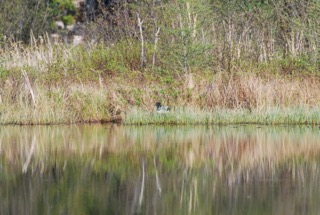

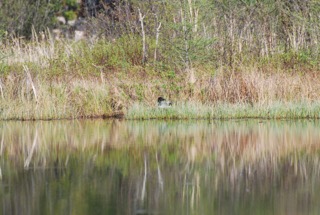
Finally, I also wanted to share with you that we have a Summer meeting set for our Friends of Martha Lake group on Saturday, 02JUL2016 at 3PM in the Mercer Senior Center. In addition to updates on our various projects, this will also be a good opportunity to meet and greet the new residents on our lake including Mike and Jackie Mueller and Bud and Kim Goblisch, if they can attend. I would like to suggest that everyone bring either cold drinks or something to munch on. Last year the temperature was sweltering, so if history repeats itself, several icy cold libations would be appreciated. If anyone is willing to assist with the set-up and clean up, please let me know. The Mercer Senior center staff allow us to use their building at no cost, so I believe it is appropriate that we leave it clean and tidy.
Thanks again for the wonderful support from all of you! I hope you are all feeling a sense of pride in the accomplishments that we have made in the collective stewardship of our lake. Roxanne and I look forward to meeting you on the lake and joining you in sharing the spirit of the awesome natural resource that we are blessed with in Martha Lake.

Tim & Roxanne Lutgen




















